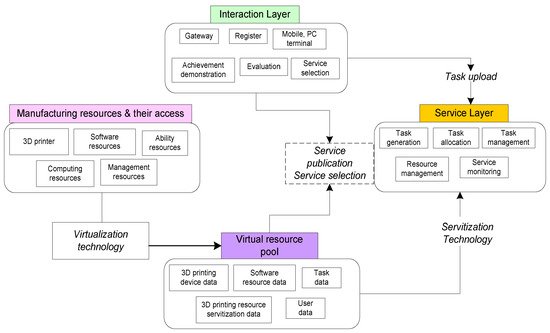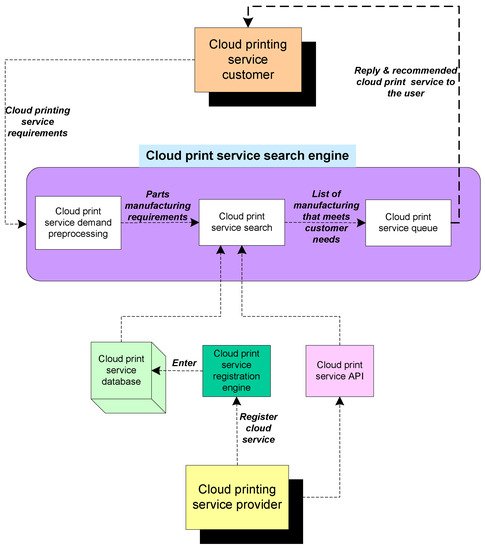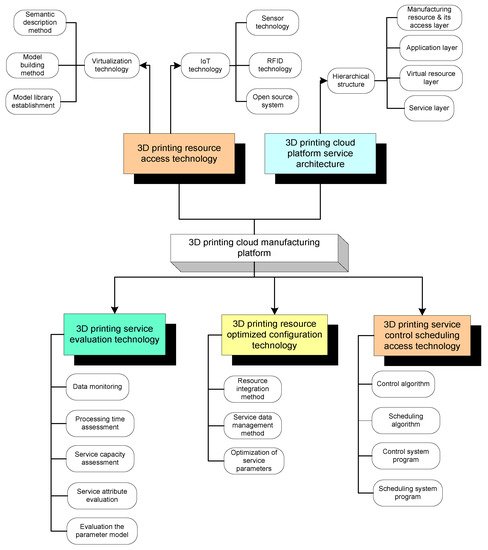The United Nations (UN) 2030 agenda on sustainable development goals (SDGs) encourages us to implement sustainable infrastructure and services for confronting challenges such as large energy consumption, solid waste generation, depletion of water resources and emission of greenhouse gases in the construction industry. Therefore, to overcome challenges and establishing sustainable construction, there is a requirement to integrate information technology with innovative manufacturing processes and materials science. Moreover, the wide implementation of three-dimensional printing (3DP) technology in constructing monuments, artistic objects, and residential buildings has gained attention. The integration of the Internet of Things (IoT), cloud manufacturing (CM), and 3DP allows us to digitalize the construction for providing reliable and digitalized features to the users. In this review article, we discuss the opportunities and challenges of implementing the IoT, CM, and 3D printing (3DP) technologies in building constructions for achieving sustainability.
- 3DP technology
- 3D-PCP
- building construction
- cloud manufacturing
- Internet of things (IoT)
- sustainability
Note: The following contents are extract from your paper. The entry will be online only after author check and submit it.
1. Introduction
2. 3D Printing (3DP)

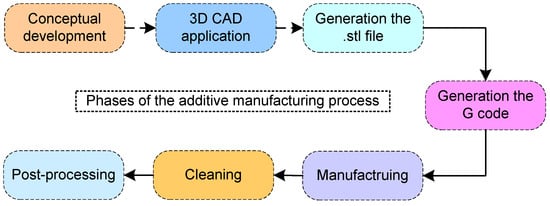
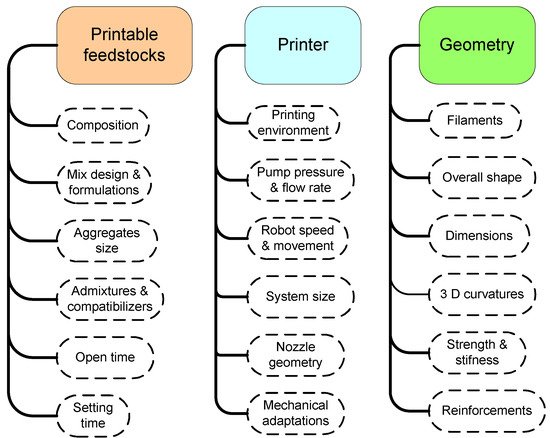
(a)
Printable feedstocks: In the context of the essence of feedstock developments, the source structure, mix model with various additives, and specific size contribute to the effect. To maximize the effectiveness of mixing materials, an accurate opening time and setting time are needed for allowing the continuous extrusion and distribution to the dust. For maximizing the mixing of feedstocks, it is essential to provide the required open period and time to allow continuous extrusion and distribution to the nozzle.(b)
Printer: Pump-integrated printers are essential for the scale of production in the construction industry. The pressure and flow rate must then be examined following the various mixing designs. To obtain a reasonable output, i.e., smooth finish, square edge, and dimensional accuracy, the printer’s speed, and size are also essential. The deposition rate of feedstocks determines construction speed, and the reduction in the setting time will lead to a significant risk of hardness inside the printer system. An integrated printing device should continuously extrude the material with continuous feedstock materials to avoid the interface between the layers.(c)
Geometry: The custom design and the effects of the existing two criteria will be used for specifically applying smart self-reinforced geometry to complete realization of scaling building blocks/objects. The strength and rigidity of the printed object/blocks could then be obtained by the type of stiffness, deposited filaments and 3D curvatures, and truss-like structure [37].3. CM and 3DP Based Construction of Buildings
3.1. Cloud Manufacturing (CM)
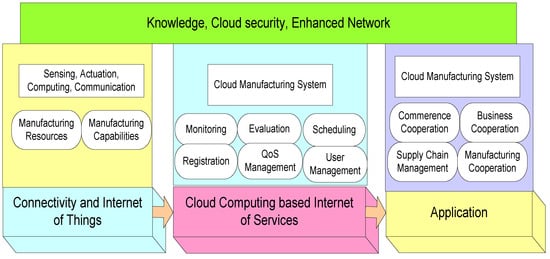
3.2. CM Assisted 3DP
3.3. Architecture for 3D Printing Cloud Platform Service
